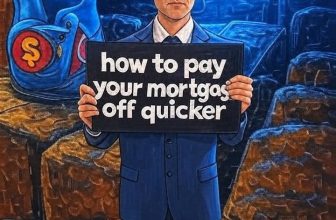(April 14, 2022)
Part 3 of a multi-post series, Turning a Decline into an Approval, here is Decline Reason #3 – Credit Issues:
Decline Reason #1: Not enough income
Click Here to expand on Decline Reason #1
Decline Reason #2: Ineligible Qualifying Income
Click Here to expand on Decline Reason #2
Decline Reason #3: Credit Issues
ISSUE: Past Credit Blemishes
- Late Payments– late on a payment? Not the end of the world…unless you are two full payment cycles behind. If this is the case, prepare to explain what happened, why it happened, and why it will never happen again. After that, it’s up to your mortgage broker and their writing and negotiating skills. With a detailed explanation and supplementary document verification, your chances for an exception are propelled (but not guaranteed).
- Collections– we’ve all been here. Whether it was intentional or not, a lender will always (by default) conclude that the collection is a result of your neglect. The most negatively impactful collection is one that is a result of a credit card, line of credit, car loan, or any other debt that originates from a major lending institution. If a collection of this description and nature appear on your credit report, you’re basically screwed for a couple of years. However, there are instances just as with late payments where a lender might express a degree of compassion towards your situation if it was a result of a major life event (death in the family, divorce, etc). The declaration alone is not enough to nullify your derogatory collections status, but it might be enough to get you in the exceptions category, possibly granting you a forgiveness pass.
- Current/past ratings on your current/past mortgage– in almost every case, this is a hard stop with any lender. Previous mortgage foreclosures, late mortgage payments, or unsettled disputes with your mortgage provider will ultimately place you in the do-not-lend-to bin. Oftentimes the only workaround here is to inquire with “B” lenders who operate with less stringent qualification guidelines, but higher interest rates and substantial set-up fees.
ISSUE: Too much debt
- Buy more with less– Consider scaling back a portion of your down payment to pay off some debt (i.e. credit card, line of credit, remaining car loan). This approach could lower your overall debt service ratio and increase your overall purchasing power
- Get a cash back mortgage– If there isn’t enough down payment proceeds to work with, consider a cash back mortgage that advances additional funds for the sole purpose of paying off existing debt loads. Interest rates for cash back mortgages are priced according to the amount of the cash back proceeds. The higher the cash back proceeds, the higher the interest rate. This approach can be ideal for certain customer profiles as it could simultaneously achieve two financing objectives with one single mortgage transaction; a purchase and a debt consolidation refinance. This is definitely a product strategy that should be given more consideration especially when the cash back proceeds are solely used to pay off high interest debt, thereby minimizing the impact of the overall higher mortgage rate. And perhaps more importantly, the debt paid down from the proceeds of the cash back result in lower debt servicing ratios thereby increasing your mortgage qualification amount.
ISSUE: Not enough credit experience
The 2-2-2 rule– the industry wide minimum credit standard for mortgage applicants is as follows: (i) TWO years of credit history (ii) a minimum of TWO credit products/facilities, and (iii) a minimum credit limit of $2,000. Exceptions to this rule are granted for New Canadians, younger applicants who have just entered the workforce, older applicants with declining spending habits, and applicants who subscribe to the “no credit is good credit” philosophy. If you do not comply with the 2-2-2 rule, ask your mortgage broker for alternative sources to present to the lender (i.e. provide document verification of other credit practising sources that do not appear in credit reports like rental agreements, utility bills, etc).
If all else fails, the next go-to remedies should prove to open up a few more qualifying vaults:
- ADD A CO-SIGNER- piggyback on a co-applicants credentials until your score is rehabilitated. Once your credit improves, check back with the lenders and allow them to do a credit check on you. If your score and/or your current credit ratings have improved to the industry accepted level, then proceed further to have the co-signer removed from your mortgage. A good mortgage broker should be able to provide you with a roadmap on how to improve your score and remove your co-signer within a realistic time-frame.
- INQUIRE WITH A ‘B-LENDER’- you’d be surprised how marginal the difference is with a higher interest rate mortgage. Rather than focusing on the higher interest rate alone, ask for monthly payment comparisons to a fully discounted inside the box mortgage rate – you will notice that the difference in the overall monthly payment isn’t as high as the interest rate implies. With that being said, the bigger shock to a “B Mortgage” is the fee that is tacked on to the mortgage principle…this could range anywhere from 0.50% of the mortgage principal to as high as 2-3%. “B mortgages” are also known as “Band Aid” mortgages in that they are 1 or 2 year terms. The objective with a “B mortgage” is to use the 1 to 2 year timeframe of the term to rehabilitate your way to renewing into a conventional “AAA” bank mortgage. Just as with planning the release of a co-signer, a good mortgage broker should be able to provide you with a roadmap on how to graduate from a “B” mortgage to a “AAA” bank mortgage.
- Check in next week for Decline Reason #4: Not Enough Down Payment
Contact Marko, he’s a Mortgage Broker!
604-800-9593 cell/text/WhatsApp | Vancouver (Click Here to schedule a call with Marko!)
403-606-3751 cell only | Calgary (Click Here to schedule a call with Marko!)
Email Me: gelo.m@mortgagecentre.com
@markogelo (Twitter)





